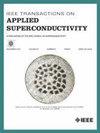Advancing Reel-to-Reel Inspection Techniques for Long HTS Conductors: Comparison and Innovations
IF 1.7
3区 物理与天体物理
Q3 ENGINEERING, ELECTRICAL & ELECTRONIC
引用次数: 0
Abstract
The continuous advancement of high-temperature superconductor (HTS) technologies has greatly accelerated the development and deployment of HTS applications. Among the critical tools supporting these advancements are reel-to-reel (R2R) critical current (推进长高温超导导体的卷对卷检测技术:比较与创新
高温超导体(HTS)技术的不断进步极大地促进了高温超导体应用的发展和部署。支持这些进步的关键工具包括卷到卷(R2R)临界电流($I_{c}$)测量技术,该技术被制造商和最终用户广泛用于表征长REBCO导体。这些技术在质量保证和质量控制(QA/QC)中发挥着至关重要的作用,确保了高温超导导体和应用在整个生产周期中的可靠性和性能。我们在休斯顿大学和普林斯顿等离子体物理实验室开发了一系列用于R2R测量的内部设备。这些包括使用磁路(MC)的一维(1D)扫描和基于扫描探针阵列显微镜(SPAM)或扫描探针显微镜(SPM)的二维(2D)磁场测绘系统。每种技术都具有独特的优势:MC系统提供超快的扫描速度,非常适合大规模工业生产中的快速检测;高分辨率SPM为导体研发提供了详细的见解;SPAM的机械设置更简单,可以在更高的场地和更低的温度条件下进行升级,并具有平衡的2D分辨率。我们通过对稀土钡铜氧化物(REBCO)涂层导体样品的实验,比较了这些技术的磁化和检测能力,并通过数值模拟支持数据分析。在综合比较研究的基础上,我们提出了对每个测量系统的改进建议,并提供了选择最佳技术组合以满足特定应用要求的指导方针。
本文章由计算机程序翻译,如有差异,请以英文原文为准。
求助全文
约1分钟内获得全文
求助全文
来源期刊

IEEE Transactions on Applied Superconductivity
工程技术-工程:电子与电气
CiteScore
3.50
自引率
33.30%
发文量
650
审稿时长
2.3 months
期刊介绍:
IEEE Transactions on Applied Superconductivity (TAS) contains articles on the applications of superconductivity and other relevant technology. Electronic applications include analog and digital circuits employing thin films and active devices such as Josephson junctions. Large scale applications include magnets for power applications such as motors and generators, for magnetic resonance, for accelerators, and cable applications such as power transmission.
 求助内容:
求助内容: 应助结果提醒方式:
应助结果提醒方式:


